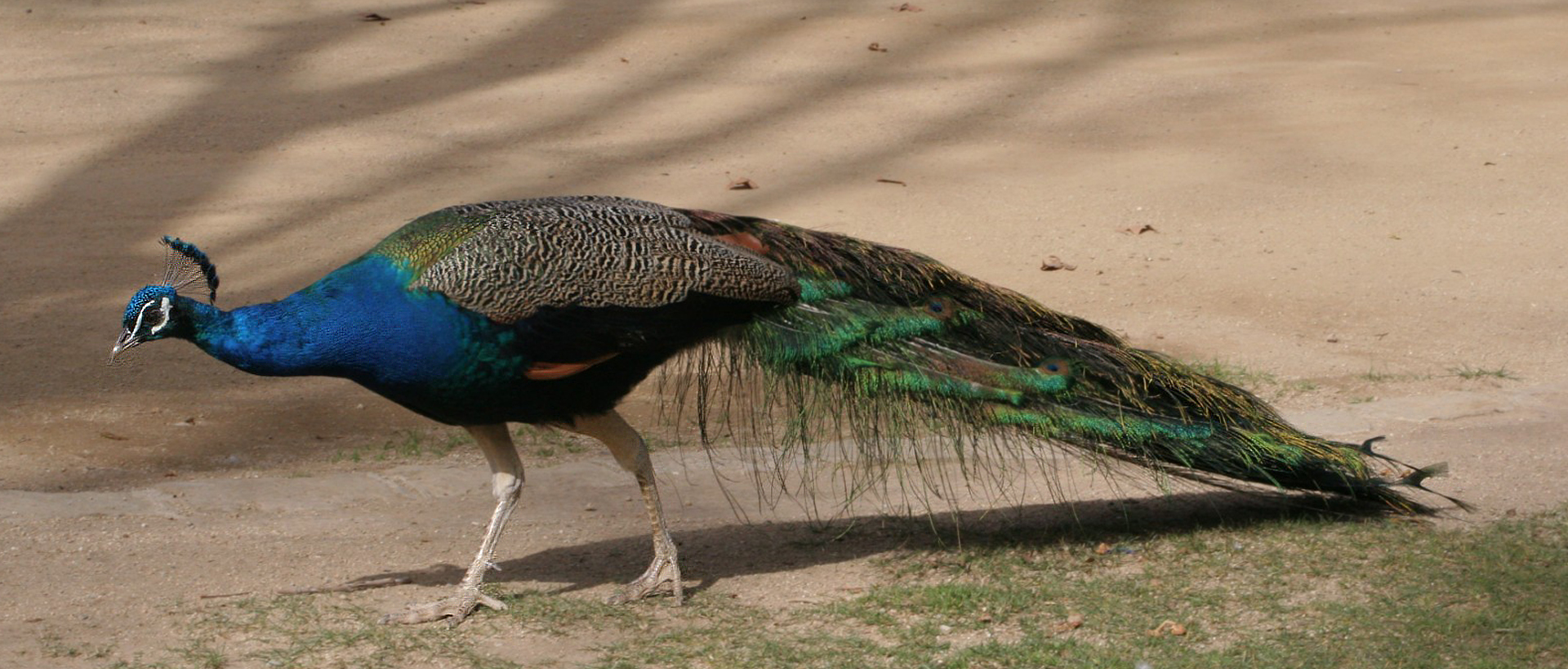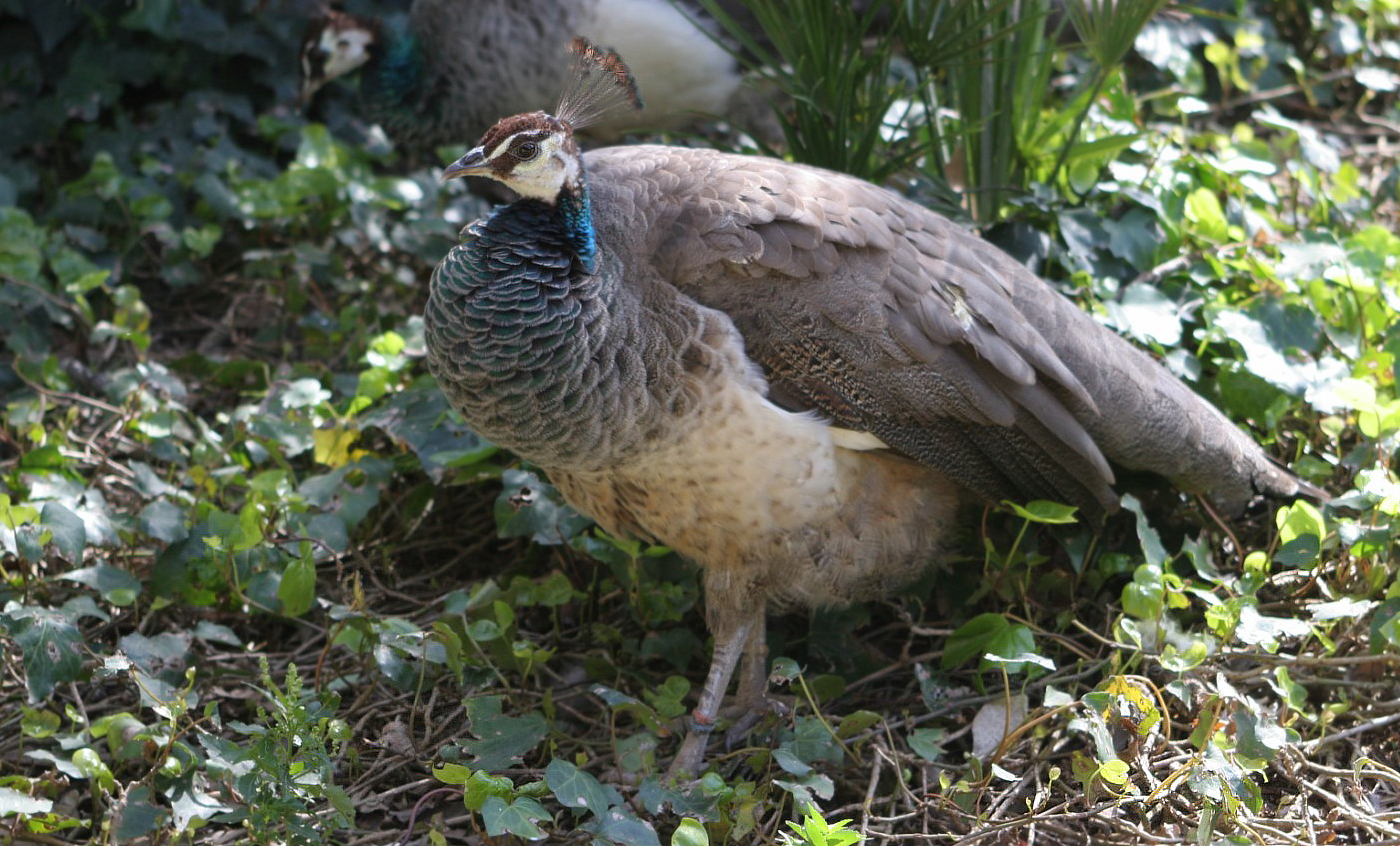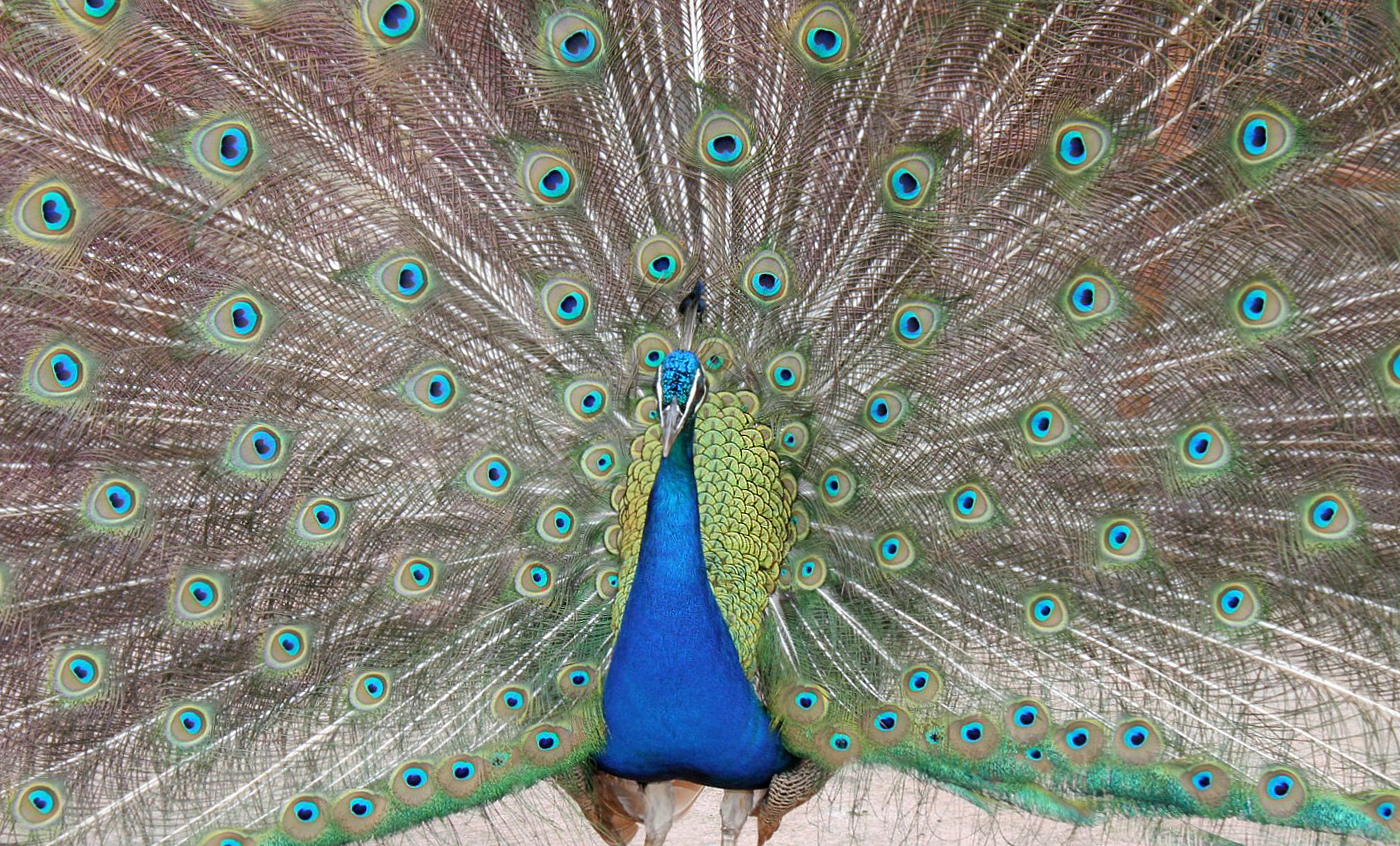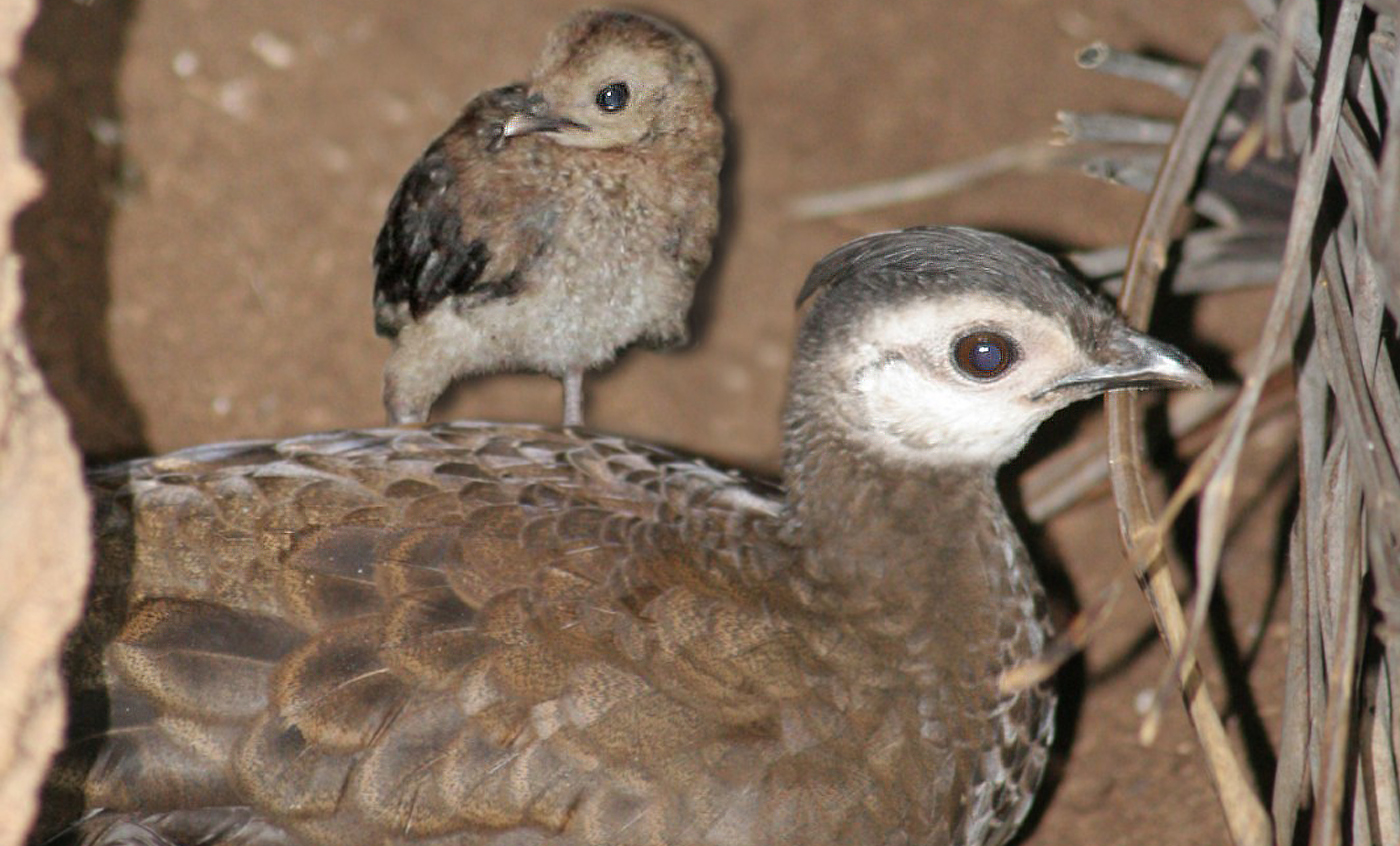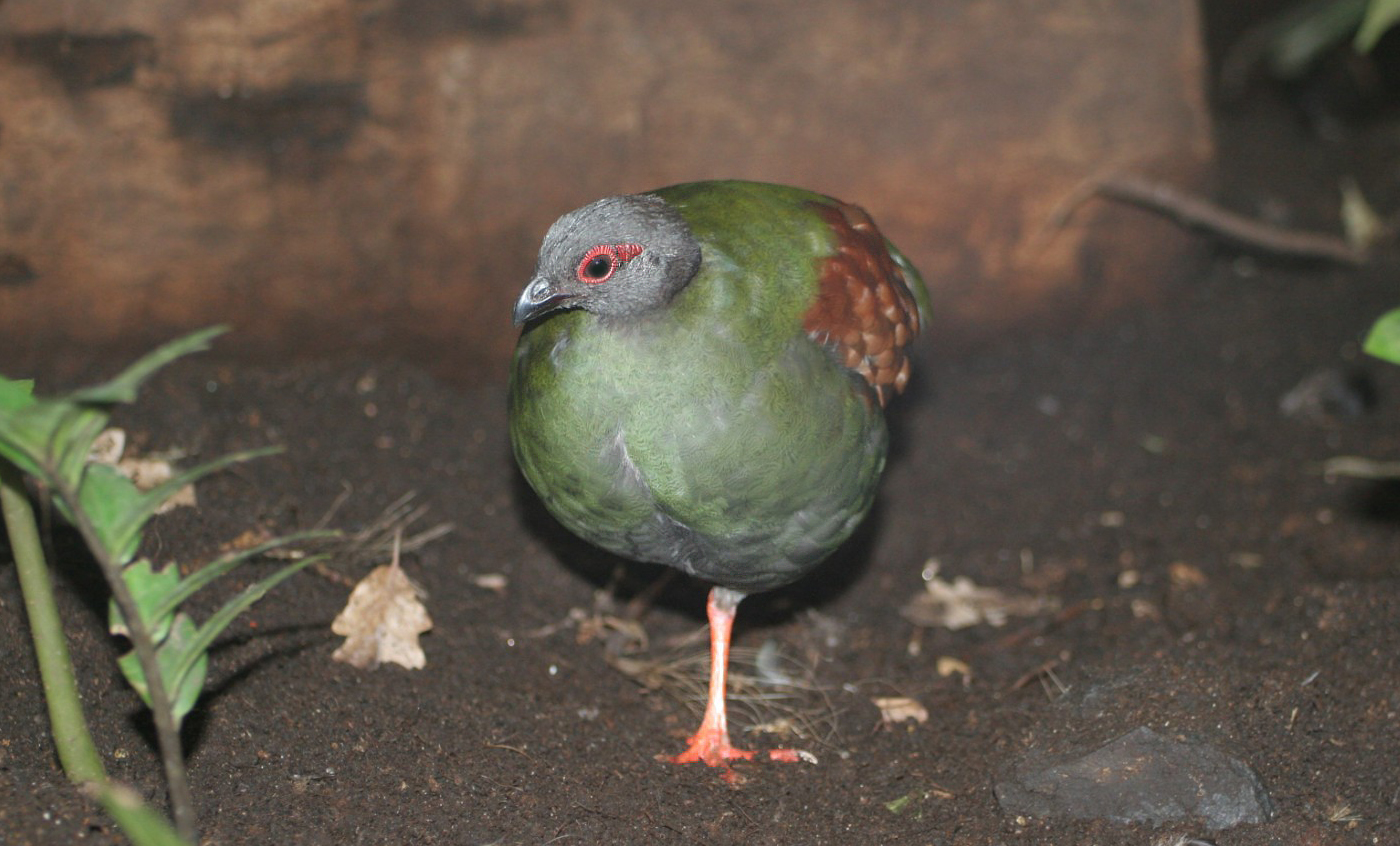Indian peafowl
The Indian peafowl lives on the ground and is omnivorous. In the wild, it is found in the dense rain forests of Nepal, India and the island of Sri Lanka.
The males’ exuberant plumage has made the peafowl a domesticated species for many years, and today it can often be seen in parks and gardens all over the world.
Breeding program
Natural habit
India and Sri Lanka.
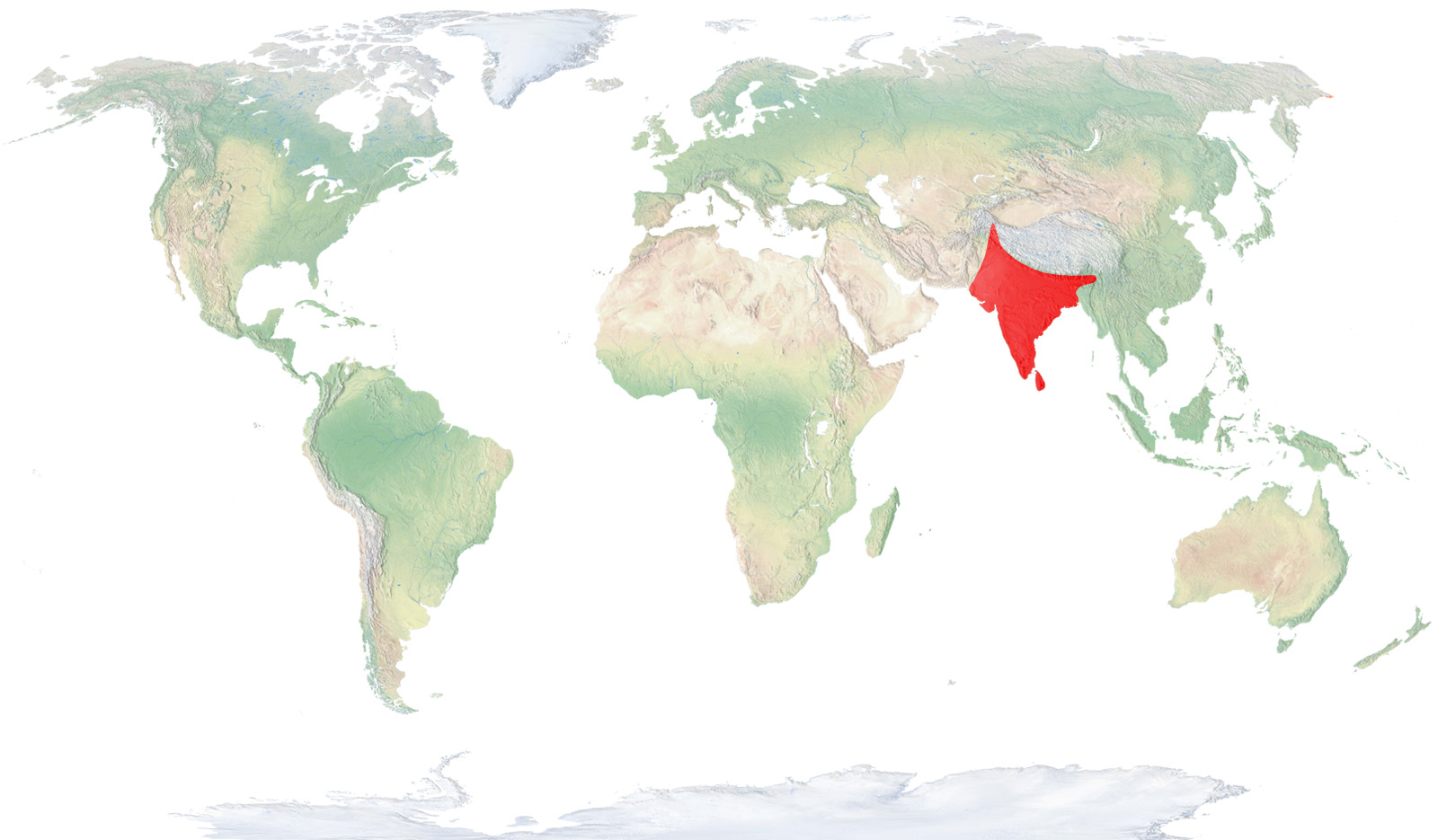
- Distribution / Resident
- Breeding
- Wintering
- Subspecies
Risk level
- Extint
- Extint in the wild
- Critically endangered
- In Danger
- Vulnerable
- Near threatened
- Minor concern
- Insufficient data
- Not evaluated
Taxonomy
Physical characteristics
Biology
Reproduction
Biology
Its sexual dimorphism is extremely prominent as the male has colourful and eye-catching plumage with iridescent blue, bright green, orange and dark stripes, an extremely long tail that it unfolds vertically during the mating ritual to attract females. Conversely, the females have brown discrete plumage.
It is found in the wild only in the dense rainforests of India and on the island of Sri Lanka.
It is an omnivore and feeds on a wide range of foods, which it can take from different sources.
The breeding season varies depending on wet and dry periods. It is basically polygamous and males tend to keep harems with at least two females. The males congregate together in specific areas, called leks, to compete and entice passing females to join them. They tend to lay three to six eggs that are incubated for 28 to 30 days. Only the female incubates the eggs in the shrubs or undergrowth, safe thanks to her cryptic and discrete colouring.
The Indian peafowl has terrestrial habits and only makes small flights, due to how heavy it is, when it has to flee from predators. It is quite common for it to spend in the night in the tops of the trees, which are quite difficult for them to climb.
Given the splendid and beautiful plumage of the males, the species has been domesticated for centuries and today they can be seen embellishing parks and gardens around the world. There is a large population that moves freely around the grounds at the Barcelona Zoo.



